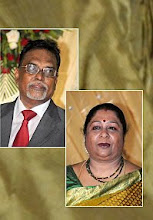Who was ‘Cotton devudu’?
S. MUTHIAH

Pioneering work Sir Arthur Cotton
Reader G.R. Sampath takes me to task for not telling him and others what the real name of ‘Cotton Devudu’ (Miscellany, December 22) was. I must apologise for taking it for granted that everyone had heard of Sir Arthur Cotton, whom I had m entioned in this column on a couple of occasions in the past.
Cotton joined the Madras Engineers in 1819, and fought in the First Burmese War (1824-26). From 1828 till he retired in 1862, a year after he was knighted, he not only transformed drought-stricken parts of South India with his dam-building, but he also kept trying to convince the authorities to construct a complete system of interlocking irrigation and navigational canals throughout India. We are still talking about what he had kept repeating to the Madras Presidency Government over the years, his plans meeting with, then as now, opposition, discouragement and ridicule. Sad that the model example he had set in the Andhra districts of the Presidency were never followed through.
It may have been in Tanjore that Cotton began his dam-building efforts, but it was the Dauleshwaram Barrage across the River Godavari that made Cotton’s reputation. It was in 1844 that Major (as he was then) Arthur Cotton, a Superintending Engineer, told the Board of Revenue that he would convert one of the poorest districts in India into one of its richest if he was given the go ahead to build a giant anicut across the Godavari at a cost of £1,20,000; the accruing revenue from the land and water charges would pay for the project and more, he was sure. His April 1845-project was approved by the Company and he got down to building an anicut 2.25 miles across the river bed and rising 12 feet above it. He also made navigable all the canal links in the area the anicut served. What he ensured, as he was to later say, was a day’s flow in the Godavari River during high floods equalling a whole year’s flow in the Thames of London!
Appearing before a House of Commons Select Committee on Indian Affairs — none of whose members was an engineer — he told them, in vindication of the expense on the Dauleshwaram Barrage, “…nothing can be more certain than that in the present case the future of India’s millions depends greatly upon whether money is still expended upon Railways, to cost £ 9,000 a mile and carry 30,000 tons at one penny, or upon canals to cost £ 2,000 to £ 8,000 and carry two or three million tons at one-twentieth of a penny, and whether districts are to be put into the state of Tanjore, Krishna and Godavari, or left in the state of the rest of the Carnatic last year and of Orissa, Bihar and Central a few years ago.”
Cotton could not convince the Government of India then. His disciples, 130 years later, still cannot convince the Government of India on the need to link at least the Mahanadhi, Godavari, Krishna and Kaveri Rivers, leave alone the other rivers of the country.
(The Hindu, Metroplus, Chennai, 29:12:2008)
________________________________
Labels: Personality


0 Comments:
Post a Comment
<< Home